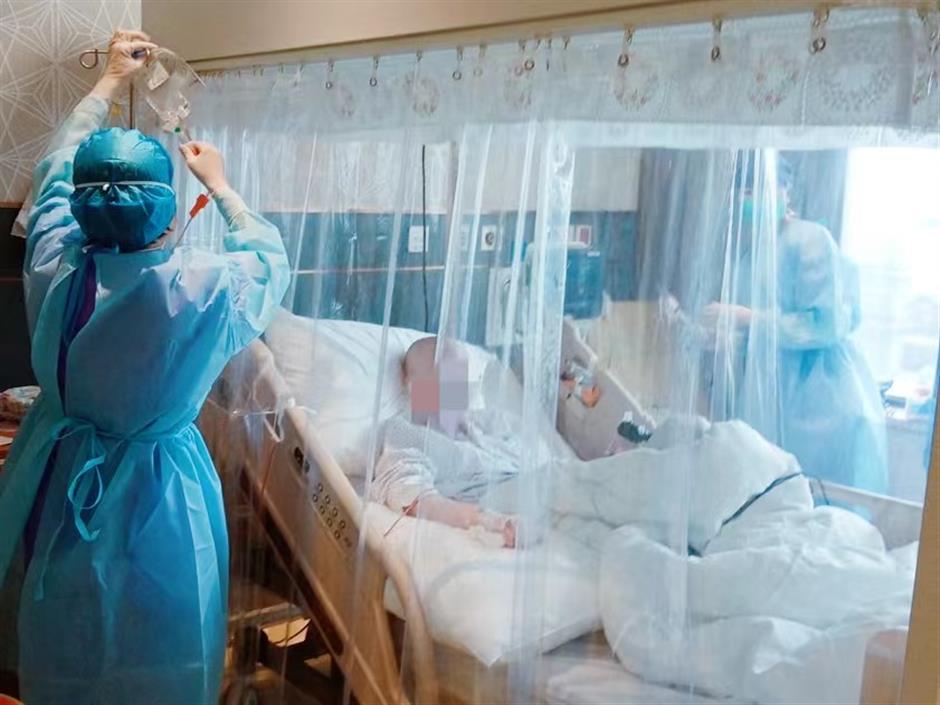A 30-year-old British expatriate has undergone a successful transplant treatment using her own stem cells to treat her cancer, officials from Jiahui International Hospital reported on Saturday.
The woman was diagnosed with Hodgkin’s lymphoma, a cancer that affects the tissues and lymph nodes of the lymphatic system, in the UK in 2019. The disease went into complete remission after treatment.
Two years later, while living and working in China, she presented at Jiahui with multiple enlarged lymph nodes. She again managed to achieve complete remission with medication. She had a third remission after immunotherapy and targeted therapies for another relapse late last year.
Doctors said young patients like the woman are expected to suffer more relapses with shorter internals.
So doctors at Jiahui suggested stem cell transplantation collected from the patient’s body to achieve a long-term and stable treatment outcome.
 A doctor checks the patient after stem cell transplantation.
A doctor checks the patient after stem cell transplantation.Due to multiple relapses and repeated use of medication, stem cell collection from the patient was not easy. Doctors undertook profound measures to ensure a successful collection.
After careful preparation, the patient had her own stem cells transfused back. Her blood count recovered within 10 days.
According to Vicky Lee, deputy director of the Jiahui International Caner Center, autologous (self to self) stem cell transplant is a medical procedure that utilizes people’s own stem cells for the transplantation process, which eliminates the risk of cell rejection.
The procedure uses the powerful differentiation and renewal ability of stem cells to treat hematopoietic diseases. These include multiple myeloma, malignant lymphoma, some leukemias and plasma cell diseases. It works by infusing the patient’s own stem cells into the body via blood vessels after being pre-treated with radiotherapy, chemotherapy and new drugs to rebuild the normal hematopoietic and immune systems.
“It involves in stem cell collection, freezing, resuscitation, transfusion, pre-transplant preparation, patient assessment, examination plan, pre-treatment protocol, quality control and care,” Lee said.
“Each step is very important and requires close cooperation of the whole team.”

















